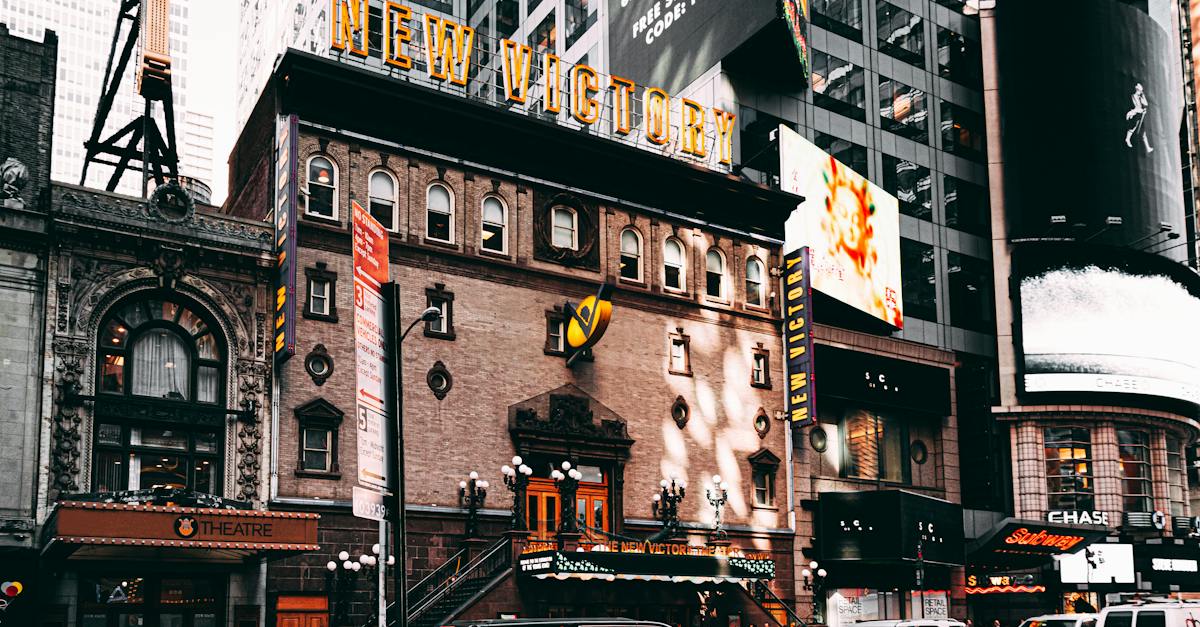Traveling is an exhilarating experience that allows us to explore new destinations, immerse ourselves in different cultures, and create lasting memories. And in the world of travel, a logo serves as the visual representation of a brand, capturing its essence and attracting potential travelers. A well-designed travel logo can evoke a sense of wanderlust, adventure, and excitement, instantly captivating the audience and leaving a lasting impression.
A travel logo should be more than just a pretty picture; it should convey the unique identity and values of a travel company or destination. From airlines to travel agencies, hotels to tour operators, a logo plays a crucial role in establishing brand recognition and building trust with customers. It should be visually appealing, easily recognizable, and reflect the essence of what makes the travel experience special.
In this article, we will delve into the world of travel logos, exploring the key elements that make them successful and discussing some inspiring examples. Whether you’re a travel business owner looking to create a logo or simply curious about the power of visual branding in the travel industry, this article will provide valuable insights and tips to help you make a memorable impression in the vast world of travel. So, let’s embark on this visual journey and discover the art of designing a captivating travel logo.
Importance of a Travel Logo
A travel logo holds significant importance in the travel industry. It serves as a visual representation of a travel brand, encapsulating its essence and creating a unique identity. A well-designed travel logo has the power to attract potential travelers and differentiate the brand from its competitors.
A travel logo plays a crucial role in establishing brand recognition. When travelers see a familiar logo, it instantly triggers an association with the brand and builds a sense of trust and credibility. This recognition is especially important in the crowded travel industry, where numerous companies compete for attention. A strong logo helps a travel brand stand out and make a lasting impression on the target audience.
In addition to brand recognition, a travel logo also conveys the values and experience that a travel company or destination offers. It should reflect what makes the travel experience special, whether it’s adventure, luxury, relaxation, or cultural immersion. The logo communicates the unique selling points of the brand and sets the expectations of potential travelers.
When designing a travel logo, it is essential to create a visually appealing and easily recognizable design. A simple, clean, and memorable logo has a higher chance of resonating with the target audience. The use of appropriate colors, fonts, and symbols can evoke specific emotions and enhance the overall message of the brand.
Overall, a well-crafted travel logo not only captures the essence of a brand but also creates a strong connection with the target audience. It serves as a powerful tool in building trust, establishing brand recognition, and conveying the unique selling points of a travel brand. In the following sections, we will provide some insights and tips on designing a captivating travel logo.
Key Elements of a Successful Travel Logo
Creating a successful travel logo requires careful consideration of various key elements. These elements not only contribute to the visual appeal of the logo but also help in establishing a strong brand identity in the competitive travel industry. Here are some essential components to focus on when designing a travel logo:
1. Visual Representation: A travel logo should accurately represent the essence of the brand it represents. It should embody the spirit of travel and evoke a sense of adventure, excitement, and exploration. This can be achieved through the clever use of imagery, symbols, and graphics that are associated with travel, such as planes, suitcases, landmarks, or globes.
2. Unique and Memorable: In a crowded market, it’s crucial for a travel logo to stand out from the competition. A unique and memorable design helps in creating brand recognition and recall. It should capture the attention of potential travelers and leave a lasting impression. This can be achieved through the combination of distinctive colors, fonts, and symbols that are not commonly used in the industry.
3. Simplicity and Versatility: A successful travel logo should be simple and easily understandable at a glance. Avoid cluttering the design with too many elements or intricate details that may be hard to decipher. Simplicity ensures that the logo can be effectively used across various platforms and mediums, such as websites, social media, brochures, and promotional materials.
4. Brand Consistency: A travel logo should reflect the overall brand identity and be consistent with other marketing materials such as websites, advertisements, and packaging. Consistency in design elements, colors, and fonts helps in building a cohesive brand image, reinforcing brand recognition, and establishing trust with customers.
5. Scalability: A travel logo should be scalable and adaptable to different sizes and formats without losing its clarity and impact. It should look equally great on a billboard, business card, or mobile app icon. Consider how the logo will be used across a variety of platforms and ensure it maintains its effectiveness in all sizes and formats.
When considering these key elements, travel brands can create a visually captivating logo that effectively represents their values, attracts customers, and reinforces their position in the competitive travel industry. Remember, a well-designed travel logo can be a powerful tool in building brand recognition and establishing a strong connection with travelers.
Examples of Inspiring Travel Logos
When it comes to creating a travel logo, it’s always helpful to draw inspiration from existing designs. Here are a few examples of travel logos that are both visually captivating and representative of their brand’s essence.
- Airbnb: The Airbnb logo is a perfect example of simplicity and clarity. The combination of the floating heart shape and the lowercase, rounded font creates a sense of warmth, friendliness, and comfort. The logo effortlessly communicates the concept of finding a home away from home while traveling.
- Expedia: Expedia’s logo is a masterclass in minimalism. The lowercase letter “e” is formed by a playful, swooping arrow, evoking a sense of upward movement and adventure. The logo’s simplicity and clean lines make it easily recognizable and memorable for travelers around the globe.
- Lonely Planet: The Lonely Planet logo effectively conveys a sense of exploration and discovery through its design. The stacked, lowercase typography combined with the iconic globe symbolizes the company’s mission of inspiring travelers to explore the world. The use of vibrant colors adds an extra element of energy and excitement to the design.
- TripAdvisor: TripAdvisor’s logo is a clever combination of the company name and a location pin. The bold, uppercase lettering commands attention, while the pin symbolizes finding and sharing travel recommendations. The logo’s simplicity and recognizable elements make it instantly associated with the travel industry.
- Booking.com: Booking.com’s logo is all about the power of repetition and simplicity. The lowercase lettering and the repetition of the letter “o” create a memorable and catchy visual. The dot on the lowercase “i” cleverly mimics a star, symbolizing the exceptional experiences travelers can find through the platform.
These examples demonstrate the diverse ways in which travel brands can create visually captivating logos that accurately represent their brand and evoke a sense of adventure and excitement. By drawing inspiration from these successful designs, travel brands can create their own unique and impactful logo, setting themselves apart in the competitive travel industry.
Designing a Travel Logo: Tips and Best Practices
When it comes to designing a travel logo, there are several key considerations to keep in mind. A well-designed logo can effectively communicate the essence of a travel brand while evoking a sense of adventure and excitement. Here are some tips and best practices to create a visually captivating travel logo:
- Research the Brand: Before diving into the design process, it’s important to research and understand the brand’s values, target audience, and unique selling points. This will help in creating a logo that accurately represents the brand and resonates with its customers.
- Simplicity is Key: A travel logo should be simple and easily recognizable. Avoid clutter and excessive details that may detract from the overall impact of the logo. A clean and minimalist design can make a logo more memorable.
- Use Relevant Imagery: Incorporating relevant imagery in the travel logo can help convey the brand’s focus and create a connection with travelers. For example, using icons such as mountains, airplanes, or landmarks can instantly communicate the travel theme.
- Choose the Right Colors: Colors play a crucial role in logo design as they can evoke specific emotions and associations. Bright and vibrant colors are often used in travel logos to convey energy and excitement. Consider using colors that reflect the brand’s identity and target audience.
- Typography Matters: The choice of typography can greatly impact the overall look and feel of a travel logo. Opt for fonts that are legible and aligned with the brand’s personality. Whether it’s classic, modern, or playful, the typography should complement the other design elements.
- Versatility and Scalability: A travel logo should be adaptable to various mediums and sizes. Ensure that the logo retains its visual impact when scaled up or down. This way, it can be effectively used on websites, print materials, social media, and other marketing collateral.
- Test and Refine: Once a logo design is created, it’s essential to gather feedback from stakeholders and test its effectiveness. Make any necessary adjustments or refinements to ensure that the logo accurately represents the brand and resonates with the target audience.
By following these tips and best practices, travel brands can create a compelling logo that captures the essence of their brand and appeals to their audience. The right logo has the potential to make a lasting impression and set a travel brand apart in the competitive industry.
The Power of Visual Branding in the Travel Industry
In the highly competitive travel industry, visual branding plays a crucial role in capturing the attention of potential customers and establishing a strong brand identity. A well-designed travel logo can evoke emotions of adventure, excitement, and wanderlust, making a lasting impression on the audience.
Visual branding is an essential component of any successful marketing strategy in the travel industry. It enables travel brands to differentiate themselves from their competitors and communicate their unique value proposition. When done right, a visually captivating travel logo can instantly convey the essence of a brand, making it more memorable and recognizable.
One of the key benefits of effective visual branding in the travel industry is the ability to create a strong emotional connection with the target audience. A visually appealing travel logo can evoke feelings of wanderlust, inspiring people to explore new destinations and embark on exciting journeys. By incorporating relevant imagery and colors that resonate with the target audience, travel brands can create an emotional bond with their customers and establish long-lasting relationships.
Moreover, in today’s digital age, where visual content dominates the online space, a visually striking travel logo can significantly enhance a brand’s online presence. It can attract attention on social media platforms, websites, and online advertising, increasing brand visibility and driving traffic to travel websites.
Additionally, a well-designed travel logo can enhance brand credibility and professionalism. It conveys the message that the travel brand is reliable, trustworthy, and committed to delivering exceptional experiences. By investing in visually captivating branding, travel companies can position themselves as industry leaders and gain the trust and loyalty of their customers.
Visual branding is a powerful tool in the travel industry that can make or break a brand’s success. By designing a visually captivating travel logo, travel companies can create a strong brand identity, establish an emotional connection with their audience, enhance their online presence, and boost brand credibility.
Conclusion
In the competitive travel industry, visual branding is a powerful tool that can make or break a brand’s success. This article has explored the significance of effective visual branding and how it can help travel companies establish a strong brand identity and connect with their target audience.
By designing a visually captivating travel logo that evokes emotions of adventure and excitement, incorporates relevant imagery and colors, and communicates the essence of the brand, travel brands can create a lasting impression on potential customers. A well-crafted travel logo can enhance online presence, boost brand credibility, and create a strong emotional connection with the audience.
Investing time and effort into creating a visually appealing travel logo is a worthwhile endeavor for travel brands. By following the guidelines discussed in this article, they can create a strong brand identity that resonates with their audience and sets them apart from their competitors. Remember, a well-designed travel logo can be the key to capturing the attention of potential customers and establishing a memorable brand in the travel industry.
Frequently Asked Questions
What is visual branding and why is it important in the travel industry?
Visual branding refers to the use of visual elements such as logos, colors, and imagery to create a consistent and recognizable brand identity. In the travel industry, it is crucial as it helps capture the attention of potential customers, create an emotional connection, and enhance brand credibility.
How does visual branding enhance online presence?
By using visual branding consistently across digital platforms, travel brands can create a cohesive and memorable online presence. This consistency helps in increasing brand recognition, attracting more online visitors, and improving search engine rankings.
What are the benefits of a visually captivating travel logo?
A visually captivating travel logo is essential as it evokes emotions of adventure and excitement, leading to a memorable brand experience. A well-designed logo also communicates the essence of the brand by incorporating relevant imagery and colors, helping travel brands stand out and attract their target audience.
How can travel brands create a strong brand identity through visual branding?
To create a strong brand identity, travel brands should focus on designing visually appealing logos, using consistent colors and fonts, and incorporating relevant imagery. They should also ensure that their visual branding reflects the unique selling points of their brand and resonates with their target audience.




